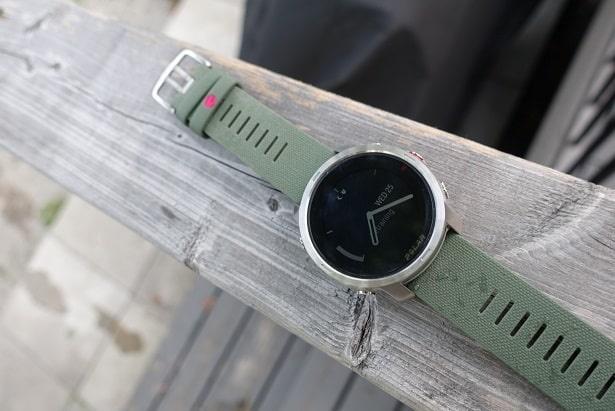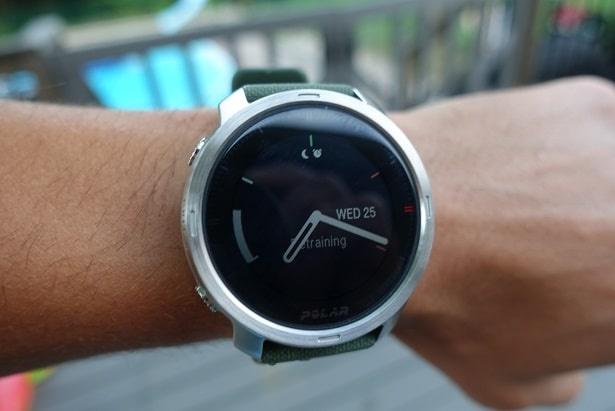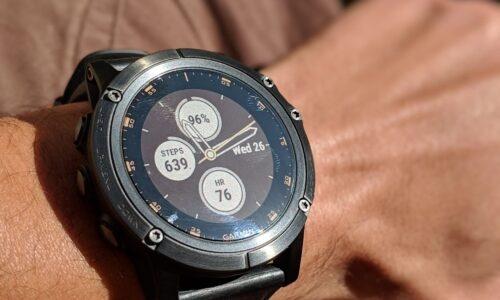Polar Grit X Review
-
Overall score
Summary
The Polar Grit X presents a compelling option in a very crowded field of sports wearables in 2021. The Grit X doesn’t try to be or do all the things, but focuses on the things it does best: training, recovery and sleep tracking features.
Pros
- Good-looking and rugged design
- Comprehensive sports tracking features
- Excellent metrics and stats with Polar Flow
- Unique endurance sports features like FuelWise and HillSplitter
Cons
- Very limited navigation features
- Very few smartwatch features
- Standby battery life is average, at best
User Review
( votes)I am a big fan of the versatility and usability of modern sports wearables. It’s a crowded market but the increasing spectrum of options for consumers is a good thing. For the last five years or so, I’ve tried various sports watches from a number of manufacturers, but I’ve always seemed to come back to the feature-rich flagship from Garmin: the Fenix series.
Garmin’s market leadership aside, Polar has always been a household name in the space of sports wearables and last year they released a watch that presented a compelling alternative to the Fenix range: The Polar Grit X. I’ve had a chance to spend a few months with the Grit X on my wrist nearly 24/7, and the paragraphs below present my thoughts on it.
Design
The Grit X design is rather understated compared to many competitors’ watches that seem to try too hard to communicate the ruggedness and outdoor-focused nature of the product.

I found the 47mm case, which features a round stainless-steel bezel, to have a robust yet premium aesthetic that will be equally at home on the trails or in the office.
 The back of the case is fiberglass reinforced polymer, which might feel less premium than full metal watches, like the Fenix 5 & 6 range, but it actually makes the Grit X a little bit lighter than those watches which is something I appreciated on longer runs. The bezel comes in black or silver, the latter of which I opted for.
The back of the case is fiberglass reinforced polymer, which might feel less premium than full metal watches, like the Fenix 5 & 6 range, but it actually makes the Grit X a little bit lighter than those watches which is something I appreciated on longer runs. The bezel comes in black or silver, the latter of which I opted for.
Coming from a watch that features a larger display, I initially thought the 1.2-inch color screen would feel small and cramped, but there’s sufficient display real estate for Polar’s wide range of activity metrics.
I’ve previously used another model of Polar’s range, the Vantage V, and I was glad to note that Polar has improved the display contrast and ease of reading in the Grit X compared to its sibling.
It should be noted that we compare like-for-like displays here, and that if you compare rugged outdoor wearables with smartwatch features to dedicated smartwatches (e.g. the Apple Watch), the latter are going to win on display clarity.
Keep in mind that sports wearables prioritize battery life over the latest in display technology. Oh, and the screen Is actually a touchscreen (more on this below).
The Grit X is comfortable to wear. Not everyone will want to wear a large sports watch all day, but I didn’t mind having it sitting on my wrist on 24/7, which is required if you would like to make use of Polar’s advanced sleep tracking and recovery features.

Sports tracking features
Polar has in excess of 130 sports tracking profiles built into its Polar Flow backend. The watch comes with several popular activity tracking presets (running, cycling, hiking, swimming, etc.), but you can easily add whatever activity you desire once you have your Polar Flow account up and running.
A rather clever feature that Polar introduced with the Grit X is FuelWise. This smart nutrition and fueling guide uses data from your heart rate, activity history and current activity metrics such as planned running distance to help you refuel and rehydrate in a timely manner.

I could see this feature being incredibly useful to beginner to intermediate long-distance runners to help them maintain their energy levels on tough runs, especially in hot weather, and avoid the dreaded bonk.
The way it works is essentially like this: when preparing to race you input the estimated heart rate zones, duration and the size of your carbohydrate refueling portions. The Grit X will then give you your estimated refueling requirements and give you audible and visual reminders to refuel.
The touchscreen works well for some very basic functions, but it seems more like an afterthought and if your fingers are dirty or wet, it struggles. The buttons on the Grit X (there is five of them), however, are among the best I have used on any sports watch. They have a nice knurled surface and an excellent positive tactile feel.
 Other things you get on the Grit X: running power ( with consistent power metrics without using a dedicated foot pod!), Strava Live Segments integration and Polar’s FitSpark workout recommendations which are based on your recovery data.
Other things you get on the Grit X: running power ( with consistent power metrics without using a dedicated foot pod!), Strava Live Segments integration and Polar’s FitSpark workout recommendations which are based on your recovery data.
FitSpark essentially offers you a menu of strength, cardio and mobility/stretching workouts based on your current recovery status. I found this to be a very useful feature and also rather unique, and I am struggling to think of other sports watches currently on the market which have a similar feature.
Another feature of note is HillSplitter, which is supposed to automatically detect climbs and descents during a run, sort of like Garmin’s ClimbPro. In my experience HillSplitter didn’t seem to present the data in a timely matter and there was some lag, as I would be already a third of the way or further up a climb before HillSplitter kicked into action.
Smartwatch features
Polar has always been focused on sports with its wearables, and while the Grit X comes with several smartwatch features, they’re not as comprehensive as, say, the Fenix watches.
You get Bluetooth notifications which can be configured using the Polar Flow app and a 10-hour weather forecast, but that’s about it. No integrated music, no on-watch message replies. You also get a few choices of watch faces (unlike the hundreds in Garmin’s app store).
 Where Polar shines is sports metrics and stats. The Polar Flow software is truly excellent. It offers up all the data you need to track, plan and understand your training progress.
Where Polar shines is sports metrics and stats. The Polar Flow software is truly excellent. It offers up all the data you need to track, plan and understand your training progress.
Polar Flow is rather comprehensive and fans of deep dives in training data will love it. Syncing with the Grit X is sometimes a bit clunky, but it works.
GPS & Navigation
If you have not owned a sports watch with navigation features before, you will probably find what Polar offers in terms of navigation aids acceptable. The Grit X integrates with sports navigation app Komoot and provides turn-by-turn guidance for pre-planned routes.
That said, there are no topographic maps, which might be disappointing so if this is an essential feature for you for backcountry navigation.
Conclusion
I think Polar presents a compelling option in a very crowded field of sports wearables in 2021. The Grit X doesn’t try to be or do all the things, but focuses on the things it does best: training, recovery and sleep tracking features.
There is an incredible spectrum of exercise and recovery insights in Polar Flow, and the data is actually presented in an actionable manner. Unique features like FuelWise, HillSplitter and FitSpark – while not all perfect – make it easy for beginner and intermediate athletes to use the watch to plan their training and understand their progress in a meaningful way.
Battery life is acceptable, especially for activity tracking, but standby battery life is lacking. Mine barely last a week between charges if I do an activity or more everyday.
I don’t mind the more frequent charges, but with the lack of a wider range of smartwatch features, it seems to that standby battery life should have better longevity.
What would make the Grit X a better watch is better navigation features, longer battery life and perhaps sapphire glass. Otherwise, if you’re an endurance athletes, there are very few watches on the market right now that present such a well-rounded package of endurance training and recovery features.

Hani Morsi is a seasoned multi-discipline cyclist with a particular liking for mountain and gravel bikes. Hani is also a mountain bike coach, trail builder and experienced bike mechanic.


